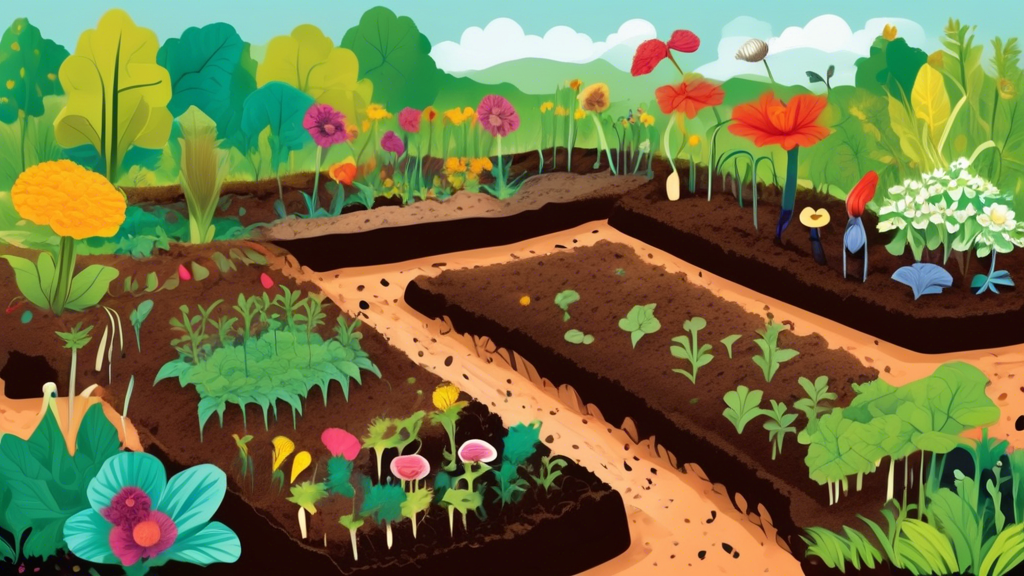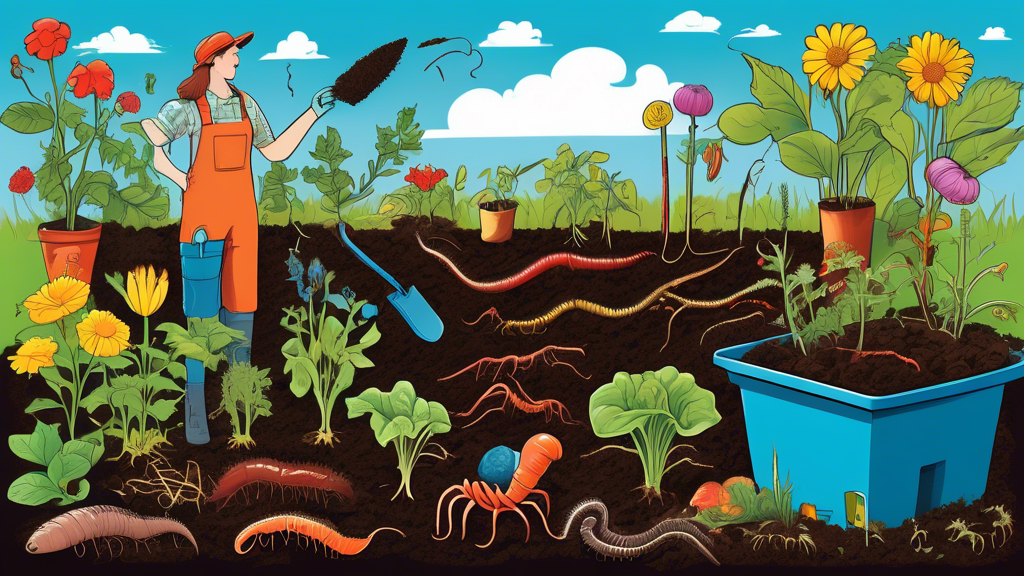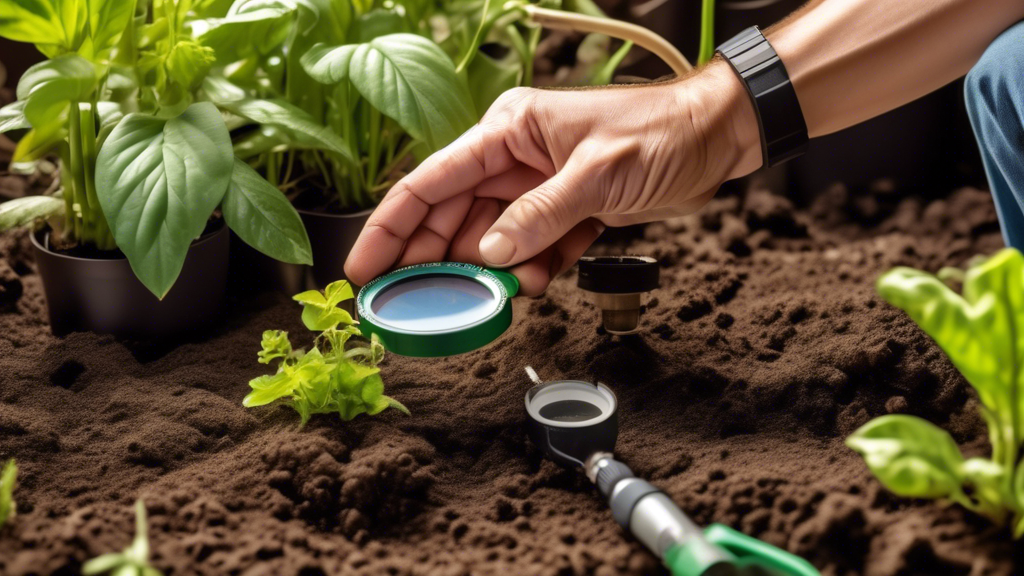
Why Soil Health Isn’t Just Dirt: An Introduction
Think of soil not as an inert substance, but as a bustling, living city. This city is home to billions of microorganisms, from bacteria and fungi to earthworms and insects, all working together in a complex ecosystem. The health of this “city” is directly linked to the health of your plants, the nutritional value of your food, and the resilience of your garden against drought and disease. This guide is focused on understanding soil health for anyone starting their gardening or farming journey.
The 5 Pillars of Healthy Soil: What Makes Soil “Alive”
Soil Structure: The Foundation of Your Garden
If you’ve ever struggled with hard, compacted soil that water pools on top of, or sandy soil that drains too fast, you’ve experienced a problem with soil structure. Structure refers to how soil particles clump together to form aggregates. Good soil structure creates tiny spaces, or pores, that allow for easy root growth, water infiltration, and air movement—the three essentials for plant life.
Soil Organic Matter: The Secret Superfood
Are your plants stunted, yellow, or lacking vigor despite your fertilizing efforts? The issue might be a lack of organic matter. This is the decomposing plant and animal material in your soil. It acts as a superfood for microorganisms, a sponge for holding water, and a slow-release fertilizer bank, unlocking nutrients for your plants over time.
The Soil Food Web: The Unseen Workforce
Constant battles with pests and diseases are often a sign of an imbalanced soil food web. This is the diverse community of life in the soil, including bacteria, fungi, protozoa, earthworms, and insects. This unseen workforce is responsible for decomposing organic matter, cycling nutrients into a form plants can use, and even forming protective relationships with plant roots to ward off pathogens.
Soil pH: Getting the Balance Right
It’s frustrating when your soil test shows that nutrients are present, but your plants still show deficiency signs. The culprit is often soil pH—the measure of acidity or alkalinity. pH acts like a control gate; if it’s too high or too low, it “locks” certain nutrients in the soil, making them unavailable to your plants’ roots.
Water Infiltration and Retention: The Sponge Effect
If you find yourself needing to water constantly or dealing with root rot from waterlogged soil, your soil’s water dynamics are off. Healthy soil acts like a sponge. It should quickly absorb water during a rain or watering and then retain that moisture, releasing it to plant roots as needed, creating a resilient buffer against both drought and heavy downpours.
Healthy Soil vs. Unhealthy Soil: A Side-by-Side Comparison
Visual and Physical Clues
| Aspect | Healthy Soil | Unhealthy Soil |
|---|---|---|
| Color & Smell | Dark brown/black color; rich, earthy smell | Light brown/gray color; may smell sour or metallic |
| Texture | Crumbly, easy to dig | Hard and compacted or dusty and loose |
| Life | Full of earthworms and insects | Few visible signs of life |
The Plant’s Performance
| Indicator | Healthy Soil | Unhealthy Soil |
|---|---|---|
| Growth & Color | Vigorous growth; deep green color | Stunted, weak growth; discolored (yellow/purple) leaves |
| Resilience | Resistant to pests, diseases, and drought | Highly susceptible to stress and infestation |
Simple Tests You Can Do at Home (No Lab Required)
You don’t need a degree to start assessing your soil. Here are a few simple tests:
- The Jar Test: To understand your soil texture (sand, silt, clay percentages).
- The Percolation Test: To check how quickly your soil drains water.
- The Worm Count: A great indicator of biological activity. A healthy square foot of soil should host several earthworms.
The Slake Test: This is a simple, powerful test many beginners don’t know. Take a dry, marble-sized clump of soil from your garden and place it gently in a glass of water. Healthy soil, bound together by organic “glues” from fungi and bacteria, will hold its structure. Unhealthy soil will quickly slake, or disintegrate into a pile of mud, showing poor aggregation and a lack of a stable soil structure.
First Steps to Improve Your Soil Health
- Stop Tilling (or Till Less): Tilling disrupts soil structure and destroys the delicate networks of fungi. No-till or low-till methods protect this underground city.
- Add Organic Matter: This is the number one rule. Incorporate well-rotted compost, leaf mold, or manure to feed the soil food web.
- Use Mulch: A layer of organic mulch (like straw or wood chips) mimics nature’s blanket, suppressing weeds, conserving moisture, and slowly adding organic matter as it decomposes.
- Plant Cover Crops: Think of these as “living mulch.” Plants like clover or rye protect bare soil from erosion and, when cut down, add valuable nutrients and organic matter.
- Rotate Your Crops: Avoid planting the same family of plants in the same spot year after year. Rotation prevents the depletion of specific nutrients and helps break pest and disease cycles.
Frequently Asked Questions About Soil Health
How often should I test my soil?
For beginners, a simple pH and nutrient test with a home kit or through a local extension service once a year is a great start. Observational tests, like the worm count, can be done every season to track biological activity.
Can I improve clay or sandy soil?
Absolutely! The universal solution for both problematic soil types is consistently adding organic matter. It binds to clay particles to create aggregates and improve drainage, while it helps sandy soil particles clump together to retain water and nutrients.
Are chemical fertilizers bad for soil health?
They provide a quick, concentrated nutrient fix for plants but can be like feeding your soil junk food. Overuse can harm the delicate soil food web by creating a salty environment and discouraging the microbes that naturally cycle nutrients. A long-term, resilient strategy focuses on feeding the soil biology with organic matter, which in turn feeds the plant.
How long does it take to see improvements?
You might see some benefits, like better drainage or easier digging, in a single season after adding compost. However, building a deep, complex, and truly resilient soil ecosystem is a multi-year process. The key is patience and consistency in your soil-building practices.






